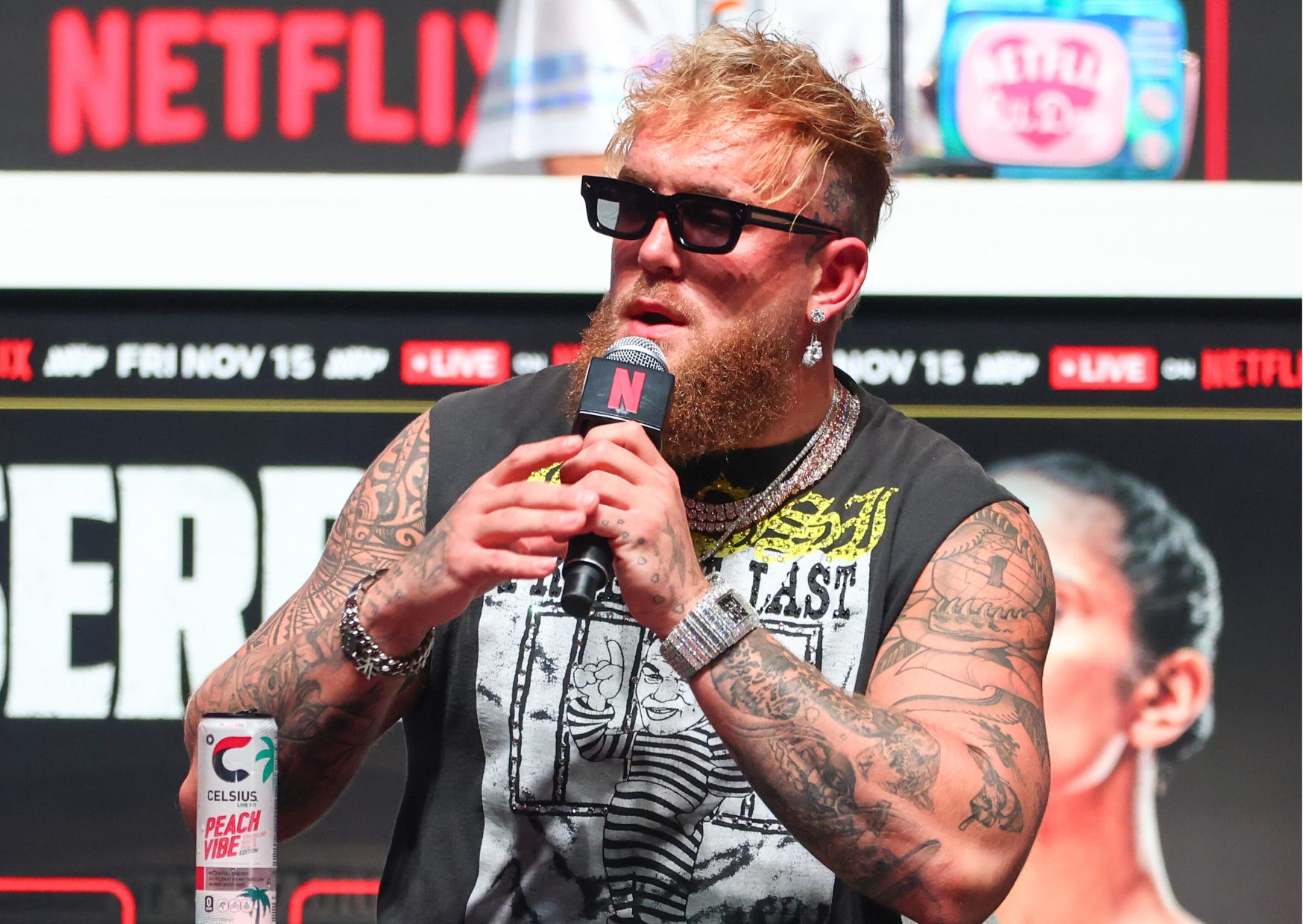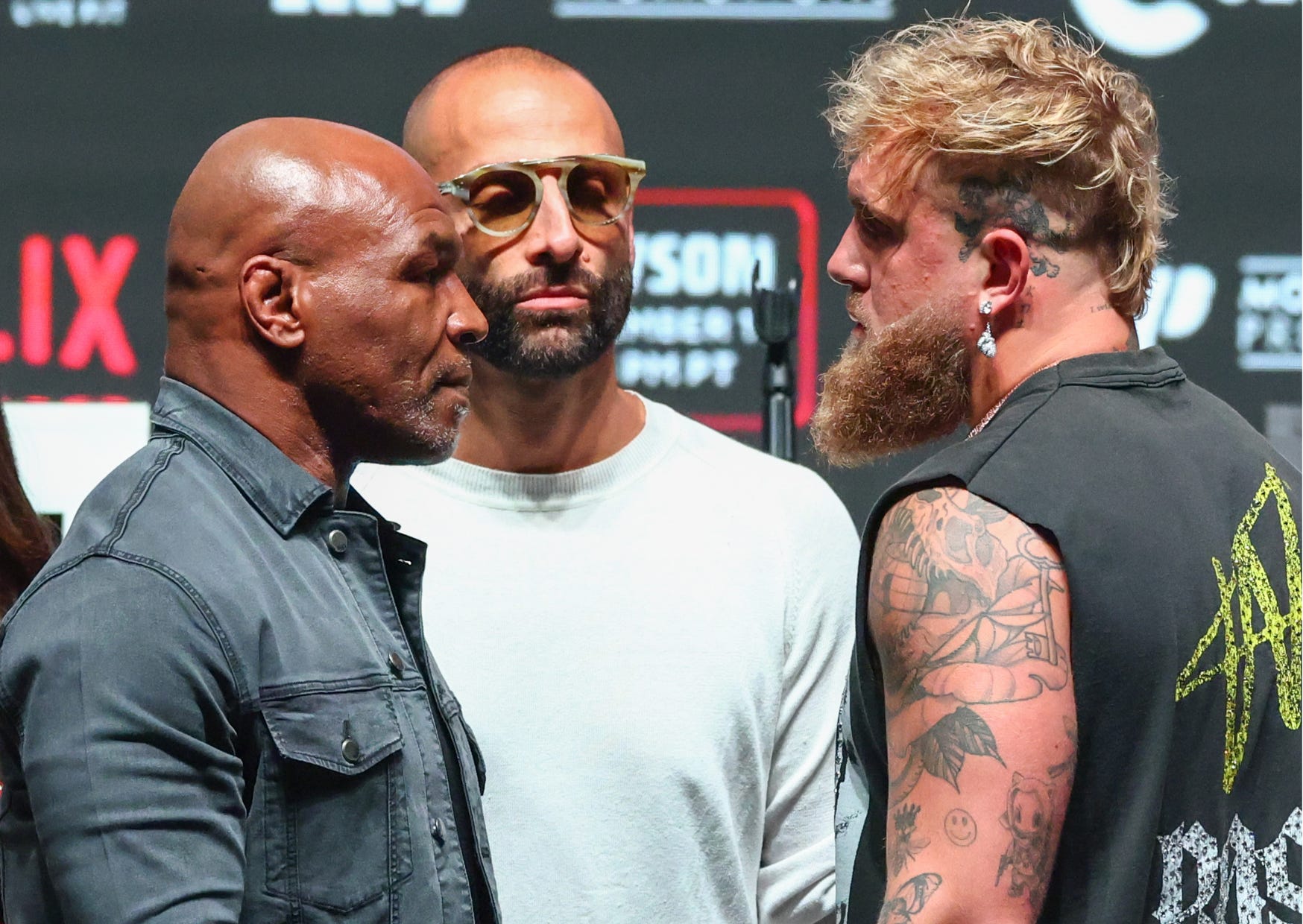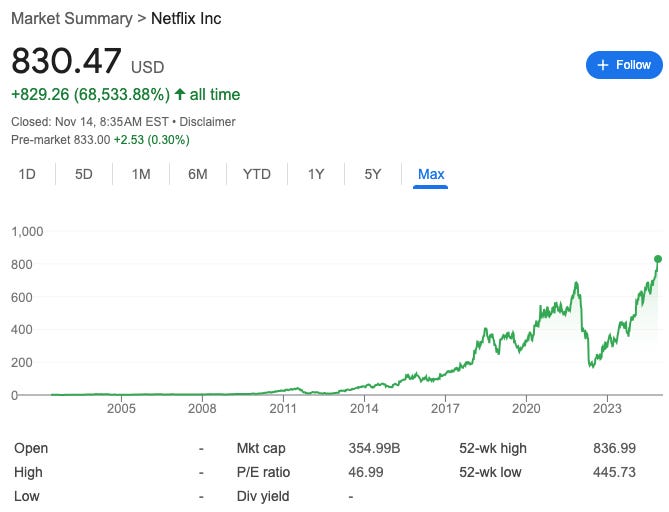Jake Paul vs. Mike Tyson: Netflix’s First Live Boxing Match Will Put Up Historic Numbers
Tonight’s boxing match between Jake Paul and Mike Tyson sounds like one of the biggest gimmicks in sports history. On one side, you have Jake Paul, who only started boxing a few years ago but has compiled a 10-1 record with seven knockouts after methodically picking opponents who don’t specialize in boxing, like former NBA player Nate Robinson and MMA fighters Ben Askren, Tyron Woodley, and Nate Diaz. Then, you have Mike Tyson. Iron Mike is one of the scariest dudes on the planet and has won 50 professional boxing matches throughout his career, including 44 (88%) by knockout. However, Tyson is also approaching 60 years old. Tonight’s fight will be the biggest age gap in history between boxers in a professional match — 31 years — and this fight had to be rescheduled from its original date because Tyson was seen in a wheelchair after a stomach ulcer knocked him out of training camp. The rules don’t make it any better. Tonight’s fight will consist of eight two-minute rounds (versus the typical three-minute rounds), and both fighters will be wearing 14-ounce gloves instead of the usual 10-ounce gloves used in heavyweight matches. But no matter how silly this entire thing sounds, it doesn’t seem to matter. Tonight’s boxing match between Paul and Tyson is on pace to be one of the biggest sporting events of the year and probably the most-watched boxing match this century. Jake Paul says that all 90,000 seats at AT&T Stadium in Dallas, Texas, the home of the Dallas Cowboys, will be filled for the fight. Paul’s promotion company, Most Valuable Promotions, sold a $2 million package that includes multiple nights of luxury accommodations, personal security, eight ring-side seats, gloves signed by both fighters, and even a post-fight photo opportunity in the ring. And sportsbooks worldwide expect this to be one of their most heavily wagered boxing matches ever. “We expect the Jake Paul-Mike Tyson fight to be the most bet on boxing match in BetMGM history,” says BetMGM trader Alex Rella. “Bettors want to see Paul get knocked out and love Tyson as an underdog. The book will be rooting for Paul to win.” The Jake Paul vs. Mike Tyson fight will be exclusively streamed on Netflix. But rather than making their subscribers pay an additional $50 pay-per-view, Netflix will focus on driving signups by making the fight free to all 282 million subscribers worldwide. This is precisely why the Paul-Tyson fight could end up being the most-watched boxing match this century. It’s not necessarily about the matchup, as we’re essentially talking about a glorified exhibition match. Instead, it’s all about distribution, as this fight should dwarf the 4.6 million pay-per-view buys for Floyd Mayweather vs. Manny Pacquiao in 2015 despite being a significantly lower-quality matchup. The model is changing, plain and simple. Showtime and HBO — once boxing PPV powerhouses — are done, and Netflix is threatening to flip the combat sports broadcast model on its head by streaming fights to its paying subscribers with no PPV. Huddle Up is a reader-supported publication. To receive new posts and support my work, consider becoming a free or paid subscriber. There was once a time when Netflix scoffed at the idea of buying live sports. In fact, Netflix co-CEO Ted Sarandos used to talk about how it was impossible to make money on sports rights, famously saying, “We’re not anti-sports, we’re just pro-profit.” However, that quote was from a few years ago, and everything has changed. Netflix introduced a cheaper, ad-supported offering after Wall Street analysts started to worry that the company’s subscriber growth (and revenue) was stalling post-pandemic. This new model has gone well. Netflix says 70 million monthly active users globally subscribe to its advertising tier, and 50% of all Netflix sign-ups are for its advertising tier in ad-supported countries. Even better, the company’s stock has fully recovered, jumping 300% to set a new all-time-high after falling 70% once the pandemic ended. However, while Netflix’s new advertising model has widened the company’s total addressable global market, it has also forced them to think differently about content. The best example of this is the NFL. Netflix recently agreed to pay the NFL $150 million for the exclusive rights to two Christmas Day games this year. Netflix probably won’t see the 3 million signups that Peacock did for its exclusive playoff game last year, but these Christmas Day games will help Netflix reduce its industry-leading 2% churn rate while also providing them with premium advertising inventory. Christmas Day NFL games are perfect for this because they will attract a live audience of 20 to 30 million people. Commercial breaks are also already pre-programmed into the viewing experience, meaning that Netflix will show these commercials to everyone regardless of whether you pay for the upgraded plan or not. The price wasn’t prohibitive, either. The $75 million per game price tag is roughly what Netflix would spend on a mid-tier movie. It’s also $25 million less than the $100 million Amazon paid for last year’s Black Friday game, even though Netflix will probably get 2x more viewers than the 9.6 million viewers on Amazon Prime. Netflix is charging $5 million for ad packages that include multiple 30-second slots throughout the day. They have already sold out of inventory, though, and might come close to breaking even before accounting for subscriber growth and reduced churn. This deal shocked everyone because it was so different from anything Netflix had done in the past. Sure, Netflix has hosted a few live sporting events, but those events — a golf tournament with Formula 1 drivers and a tennis exhibition match between Carlos Alcaraz and Rafael Nadal in Las Vegas — were both canceled (despite selling out tickets) because they each drew less than one million viewers on Netflix. The NFL on Christmas Day is a bigger investment that will certainly produce better results than Formula 1 drivers yelling “fore!” on their off day. But it also signifies what type of sports content is important to Netflix: premium events and episodic content. For example, rather than fighting with Amazon to pay more than a billion dollars for the rights to some NBA games, Netflix is spending $500 million annually for the exclusive, global rights to WWE’s Monday Night Raw. This fits nicely into their strategy because while these events won’t draw tens of millions of viewers each week, they provide year-round inventory to the platform (i.e., more advertising slots), and the scripted nature of professional wrestling is easier to program around than live sports. I tell you all this because tonight’s fight between Jake Paul and Mike Tyson also follows this strategy. No, it’s not necessarily episodic or scripted, but Netflix was able to promote the event through a docuseries on the platform, and the star power of Paul and Tyson should attract tens of millions of viewers throughout the night. And that’s without even mentioning what this could mean for the future of combat sports. The UFC’s media rights deal with ESPN is coming to an end. ESPN wants to renew, as I’ve heard that the UFC is dollar-for-dollar their best media rights deal, and the two parties are locked into an exclusive negotiating window through Q1 2025. But the interesting part here is that several Netflix executives have been spotted at multiple UFC events, and there is already some commonality, as the UFC is owned by the same company as the WWE, meaning the executive team has already done a big deal with Netflix. If I had to place a probability on Netflix striking a media rights deal with the UFC, I’d say it’s still under 10 percent. Although, that says more about ESPN than Netflix, as ESPN has paid more money than people expected for recent rights packages because they want to ensure they have all the best content as they transition viewers to streaming. But if tonight’s fight puts up a big number and the WWE partnership gets off to a hot start when the calendar flips to 2025, don’t be surprised if Netflix starts to look more like traditional television. Premium sports rights will drive subscription prices higher for everyone, and commercial coverage will make it hard to differentiate from cable. If you enjoyed this breakdown, share it with your friends. Join my sports business community on Microsoft Teams. Huddle Up is a reader-supported publication. To receive new posts and support my work, consider becoming a free or paid subscriber. Why Deion Sanders Is The Most Underpaid Coach In College FootballYou’re currently a free subscriber to Huddle Up. For the full experience, upgrade your subscription.
© 2024 |




